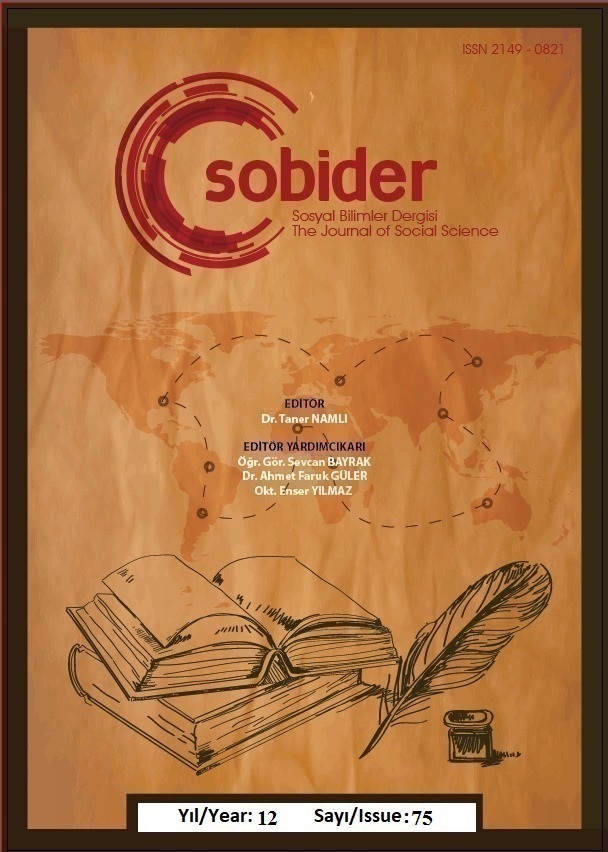Author :
Abstract
Tarihî süreç içerisinde eski çağ ve milletlere kadar uzanan kölelik ve cariyelik, Osmanlının toplumsal hayatında önemli bir konumda bulunur. Varlığı yirminci yüzyıla kadar süren cariyeliğin edebî metinlerde geniş bir perspektifle yer alması Tanzimat Dönemi'nde ortaya çıkar. Dönem sanatçılarının özel hayatlarında daha çok anneleri aracılığıyla tanıştıkları cariyelik, aynı zamanda hürriyet teması etrafında değindikleri bir müessesedir. Yaşadığı dönem (1843-1893) itibarıyla Mehmed Tevfik de Tanzimat Dönemi içerisinde yer alan sanatçılardan biridir. 1301 (1883/1884) yılında yayımladığı İki Gelin Odası, dönemin Osmanlı toplumunun örf, âdet ve geleneklerine ışık tutması kadar cariyeliği ele almasıyla öne çıkar. Bu bağlamda eserde öne çıkan kadın karakterlerin cariye veya cariye kökenli oluşları dikkat çekicidir. Romanın esas kısmını oluşturan ikinci hikâyede çatışma unsuru cariyeler üzerinden sağlanır. Cevriye, Mihridil, Canfeda ve Kethüda Kadın eserde daha fazla durulan cariyelerdir. Mihridil kurban cariye; Cevriye ve yardımcısı Canfeda şeytan cariye; Kevser ve Kethüda Kadın ise kendi hâlinde yaşayan cariyeler olarak romanda cariye tipolojisini oluştururlar.
Keywords
Abstract
Slavery and concubinage, which date back to ancient civilizations and societies throughout history, occupied a significant position in Ottoman social life. The inclusion of concubinage in literary texts from a broad perspective emerged during the Tanzimat period. Concubinage, which many Tanzimat-era authors encountered primarily through their mothers' experiences, was also an institution they addressed within the theme of freedom. Mehmed Tevfik, who lived between 1843 and 1893, was one such literary figure of the Tanzimat period. His work İki Gelin Odası, published in 1301 (1883/1884), stands out not only for shedding light on the customs, traditions, and social norms of Ottoman society at the time but also for its notable portrayal of concubinage. In this context, the prominence of female characters who are either concubines or of concubine origin is particularly noteworthy. In the second story, which constitutes the main body of the novel, the conflict element is constructed through concubine characters. Cevriye, Mihridil, Canfeda, and Kethüda Kadın are the concubines who receive more focus in the narrative. Mihridil represents the victimized concubine; Cevriye and her assistant Canfeda embody the malicious concubine archetype; whereas Kevser and Kethüda Kadın portray concubines who lead relatively quiet lives, collectively forming the typology of concubines in the novel.





